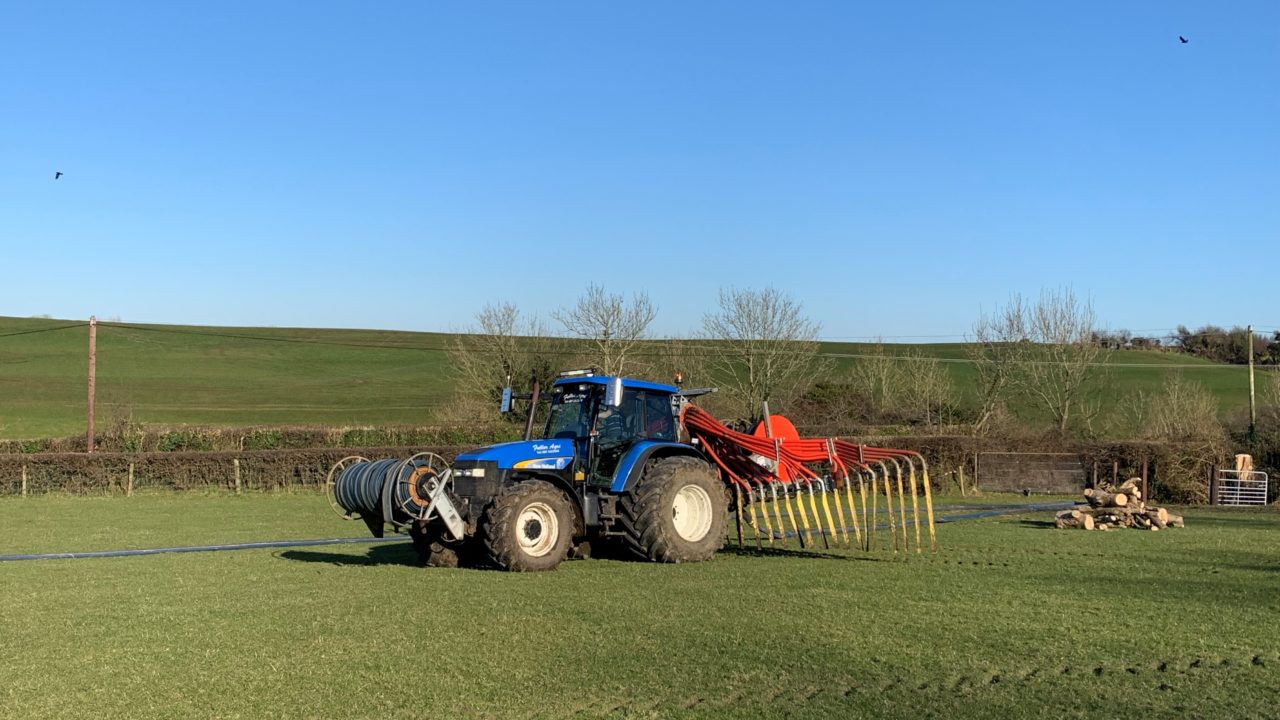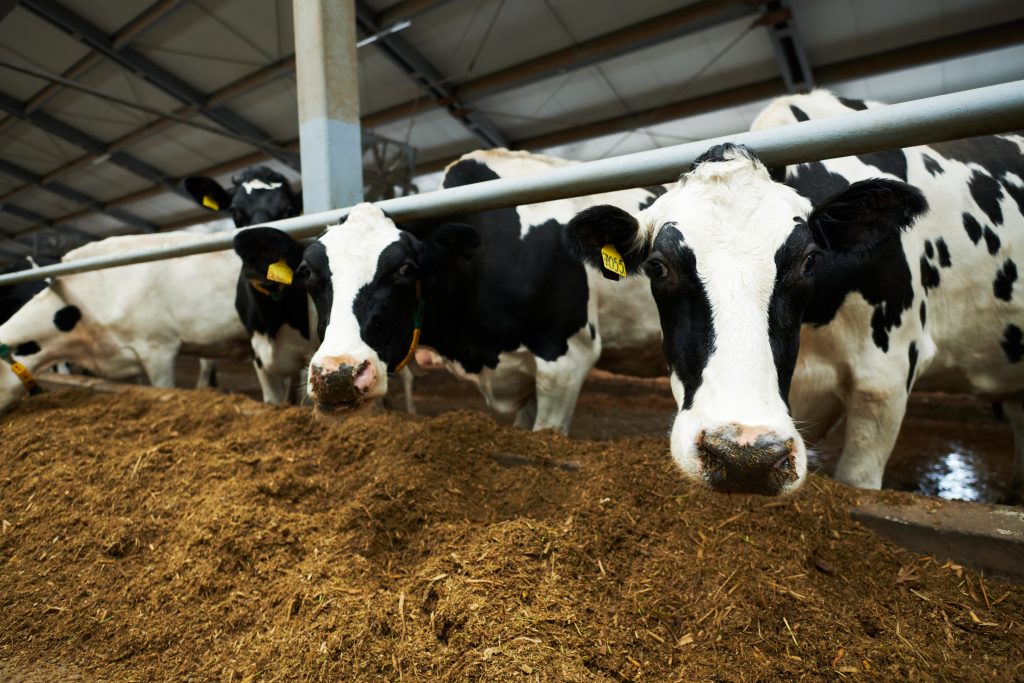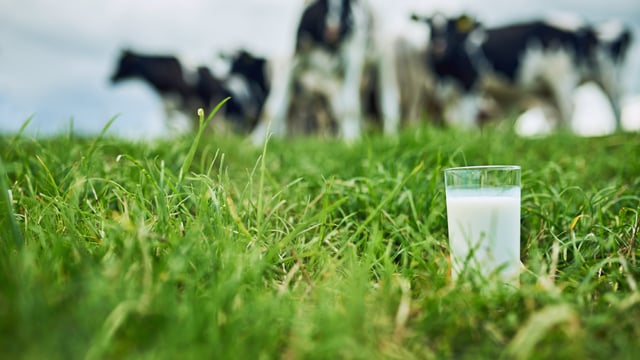Explainer: From slurry storage to compliance - what 6th NAP could mean for your farm
New measures which would see farmers needing to know their 'number' when it comes to nutrient balance and possibly increasing slurry storage on their farm are just some of the proposals set out in the draft sixth Nitrates Action Programme (NAP).
But other regulatory measures around the timing of nutrient application for arable crops could also be in the pipeline for farmers across the country if the proposals set out in the draft sixth NAP come into force.
The Department of Housing, Local Government and Heritage has now published a draft consultation document on the sixth NAP which sets out "specific measures to protect against nutrient pollution arising from agricultural sources".
Some of these proposed measures fall under the "regulatory" category while others are "non-regulatory".
Proposed new regulatory NAP measures
1: Nutrient balance at individual farm level:
According to the Department of Housing it is important that farmers know their nutrient balance, to help them "minimise the loss of valuable nutrients" from the farming system to the environment.
The requirement to know a farm’s nutrient balance will be mandatory for derogation farms and encouraged for other farms.
Farmers can work out their farm's numeric nutrient balance by calculating the difference between the nutrients that come into the farm as inputs - which may be in the form of fertilisers, animal feed, purchased livestock - versus those that leave the farm as outputs - which may be in the form of crops, meat or dairy produce.
2: Improved nutrient distribution on fragmented farms:
The draft sixth NAP sets out that on fragmented dairy farms and depending on soil fertility status, maximising nutrient use is best achieved "by applying the cattle slurry to the area used for silage conservation".
But the draft consultation document highlights that "for practical and economic reasons, the nutrient distribution on fragmented farms might not extend to the outblocks".
Therefore, a higher concentration of nutrients may be spread on the land closer to the farmyard or the the milking platform.
Under the new regulatory proposal, if a farmer "cannot demonstrate that livestock manure is being spread across the farm holding", this would result in a lower nitrogen (N) allowance being applied.
3: Increased slurry and soiled water storage capacity requirements:
The draft NAP consultation document outlines that Teagasc research shows that the volume of slurry produced by the average dairy cow in Ireland is 21% higher than existing regulatory values.
As a result, the Department of Housing states that this indicates that the slurry storage capacity requirements needs to increase.
Currently farmers must have provision for 0.33m3 (330L) per cow per week for slurry storage and 0.21m3 (210L) per cow per week for soiled water storage - plus an allowance for rainfall runoff from any adjacent uncovered areas
Under the proposed new regulatory measures the volume of slurry produced from a dairy cow "will change to 0.40m3 per week".
The Department of Housing also details the draft consultation document that compared to the existing value, the volume of soiled water produced from a dairy cow has increased by 43%.
"It is proposed to be set as 0.30m3 per cow per week, instead of the current 0.21m3 per cow per week," it outlines.
This would be based on the number of cows being milked at "critical times" of year rather than theoretical peak cow numbers at any time during the year.
The department acknowledges that any changes would in terms of increased slurry and soiled water storage on dairy farms "will require planning, on-farm investment and construction" and therefore they would not come into effect until October 1, 2028.
It has also stated that "subject to the available budget" the construction of additional storage will be supported through grant aid provided by Department of Agriculture, Food and the Marine (DAFM).
4: Chemical nitrogen allowances for grassland and arable crops:
The fifth NAP introduced a reduction in chemical nitrogen allowances but there are no proposals to apply further reductions in chemical nitrogen allowances under the sixth NAP.
However an adapted silage production allowance - available nitrogen and phosphorus - for farms operating at or below 85kg organic N/ha will be introduced.
5: Timing of nutrient application for arable crops:
The sixth NAP proposes that the timing of the application of nutrients to arable land "will be restricted" in certain areas in order to improve water quality.
The Department of Housing stated: "With the exception of arable land being sown to brassica spp or grass crops by September 15, post-harvest application of organic fertiliser in the form of sewage sludge or biosolid derived from the treatment of sewage sludge, is proposed to be prohibited in the Barrow Catchment and the Slaney & Wexford Harbour Catchment".
This measure is proposed to apply with effect from January 1, 2028 to enable farmers to develop additional storage or to find other land to apply the "sewage sludge" on.
In addition to this the sixth draft NAP also outlines that where other manures are applied nationally to arable land in the autumn, they "will be required to be incorporated into the soil and have a crop sown within 21 days".
5: Expansion of DAFM’s organic nutrient movement database:
In January this year, DAFM introduced a new online register for exporting slurry or other organic manures within four days of the export.
It is proposed in the consultation document that this register would be "extended by DAFM to include the export of all organic manures that are being applied to agricultural land, regardless of the source".
The department has also advised that where possible "sampling of spread lands" will be undertaken to verify the validity of soil samples submitted.
6: Continued and increased focus on compliance and enforcement, and the National Agricultural Inspection Programme:
Currently both DAFM and the local authorities carry out farm inspections under the Good Agricultural Practice (GAP) for the Protection of Water Regulations.
DAFM has supported the training of local authority inspectors but under the draft sixth NAP farm inspections will be "aligned and standardised, using a strengthened risk-based approach".
There is also a proposal to make farm inspectors a permanent rather than contracted job.
7: Overall review of the GAP Regulations:
The draft consultation document on the sixth NAP highlights that the GAP Regulations have been updated since 2006 and are now "unwieldly and inaccessible to many".
It details that an "overall review of the GAP Regulations" has now taken place in order to simplify the regulations, streamline them where possible and make them more accessible while maintaining the protections required for water.
Changes from 5th NAP:
It is proposed to continue or expand on all of the measures introduced in the fifth NAP in the draft sixth NAP "with one exception".
Shallow cultivation on arable land was introduced under a measure in the fifth NAP to promote the growth of "Green Cover on Tillage Ground" in selected counties where significant nitrogen load reductions were required.
As a result, shallow cultivation or sowing of a crop/catch crop had to take place within 10 days of the baling of straw or, where straw is chopped, within 10 days of harvest.
Shallow cultivation or sowing of a crop/catch crop also had to take place within 14 days of harvesting.
Under the fifth NAP, there was a requirement to retain 20-25% uncultivated cover to "support seed eating birds during the winter period".
But the Department of Housing stated in the latest draft consultation document that research shows the importance of tillage land to winter farmland birds particularly skylark, linnet, and yellowhammer.
"It is therefore proposed to remove the existing requirement for shallow cultivation in the draft sixth NAP," it outlined.
The draft sixth NAP is available on the Department of Housing, Local Government and Heritage website and is now open to public consultation until December 1, 2025.







